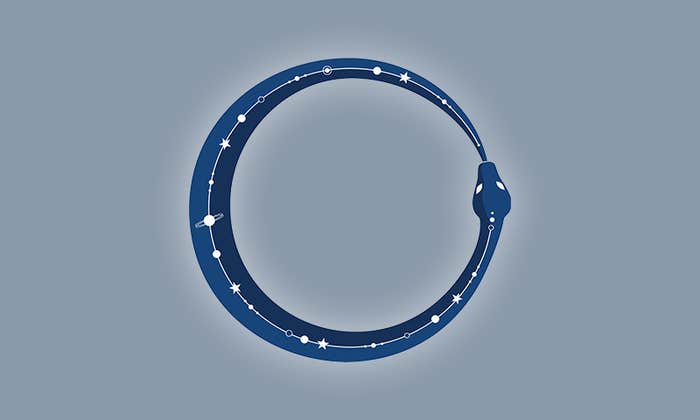In 1599, a young woman in the Loire Valley of France began to suffer violent outbursts, rolling around on the floor in convulsions, eyes rolled back in her head, tongue lashing out, a tortured voice erupting from her stomach. Named Marthe Brossier, she accused her neighbor of using witchcraft to cause a demon to possess her, and she quickly became famous. Her family took her on tour from town to town, and priests were called in almost daily to conduct exorcisms, with large audiences drawn to the spectacle.
At the time, a violent conflict was afoot between Catholics and Protestants in France. Brossier came from a Catholic community and her demon claimed, among other things, that all Protestants belonged to Satan. Fearing political consequences, King Henry IV sent a medical commission to study the girl in private.
Royal physician Michel Marescot decided that the way to divine the truth would be to bring both real and sham religious objects—unconsecrated water or wafers held in a bottle or box normally reserved for holy ones—and compare Brossier’s reactions to them. Over a period of 40 days, he and his cadre ran their tests and found no discernible difference in the way the girl responded to the different objects: When a sham relic was held against her skin, she would scream as though it were made of fire. So Marescot and the other physicians concluded that Brossier was not possessed. Other special investigations organized by Catholic clergy, considered politically motivated, found the opposite, however, and reports from the different teams made their way around Europe.
Theology was the language of science, so to speak.
From our 21st-century perspective, of course, it comes as no surprise that poor Marthe Brossier was not possessed. Still, Marescot’s trickery constitutes one of the first ever placebo-controlled trials—centuries before we had a name for them, says neuroscientist Karin Jensen, of the Karolinska Institutet in Sweden.
Scholars have long held that the placebo control, as such, was invented during the Enlightenment, or even in more modern times, after the Protestant Reformation, says Jensen. But she and a medieval scholar named Racha Kirakosian of Freiburg University were convinced there must be precursors. “During medieval days, there were people with pretty advanced scientific thinking,” says Jensen. Kirakosian suggested they look among the scholastics, a medieval school of philosophy that relied on an Aristotelian form of analysis. These were early skeptics like French theologian Jean Gerson, Italian Dominican friar and priest Thomas Aquinas, and Italian bishop Saint Bonaventure. Back then, there was no real separation between theology and science. “Theology was the language of science, so to speak,” says Jensen.
Jensen and Kirakosian eventually found what they were looking for in medieval texts about witch hunts. Together with Harvard University scholar of placebo research Ted Kaptchuk, they published their findings earlier this year in the Journal of the Royal Society of Medicine.
In the paper, they show that the royal physician Marescot was borrowing from the writings of Gerson, a medieval public intellectual and Chancellor of the University of Paris. In the late 14th century, divine revelations were in vogue. Women were often the ones to claim that God was speaking through them, and their pronouncements often contained bold ideas that had powerful social and political influence. The women were talked about extensively during meetings at the Vatican, says Jensen, and Gerson became obsessed with finding ways to tell when a revelation was real and when it was a trick. Like other scholastic theologians and philosophers, Gerson wrote a lot about divine and sham relics—how the objects’ transformation happened and how difficult it was to tell the difference. But he was the first to call for a rigorous look at divine revelations in his writings, and these writings ultimately found a wide audience.
Early medieval pre-scientific ideas were mainly spread in manuscripts that were handwritten in monasteries, but when the printing press was invented, among the very first books printed were Gerson’s texts explaining how to discern true from false. Gerson’s books sat, together with manuals that discussed how to tell a witch from a regular woman, on the desks of every judge and inquisitor in Europe. Their influence was enormous. “That’s when the exorcisms started to happen,” says Jensen. “The women who were allegedly possessed were, in the end, assessed by physicians. And that’s the first time when we moved from this religious realm to the medical realm.”
Gerson’s ideas about placebo controls were later used to identify charlatans like German physician Franz Anton Mesmer, for instance—who falsely claimed that something called animal magnetism could heal tissues and disorders—and to debunk miracle cures.
Today, placebo controls are used in almost every rigorous form of clinical trial, to identify medicines that have a measurable biological effect from ones that work primarily through suggestion, and to discern the role of the psyche in healing. They remain one of the most clever ways we have in science to tell when a medicine’s real power resides mostly in the mind. ![]()
Lead image: matrioshka / Shutterstock
































